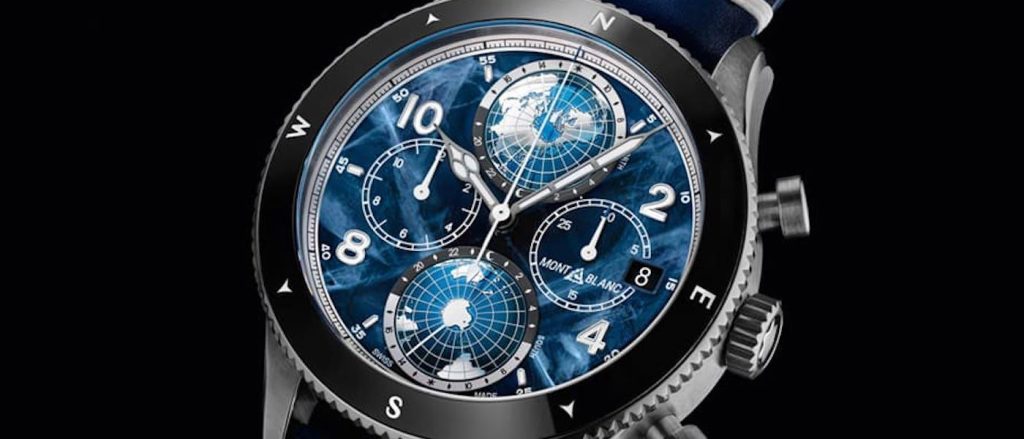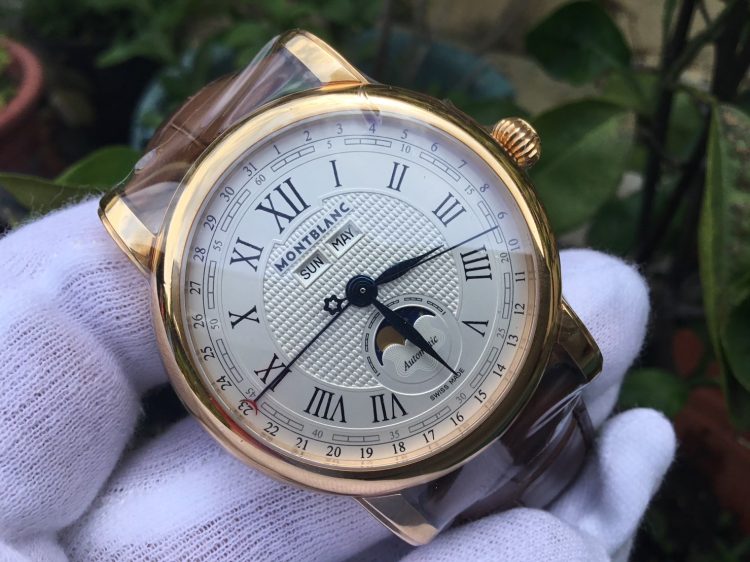1. Introduction: The Intersection of Craft and Technology in Montblanc Watches
Montblanc has long been synonymous with luxury, craftsmanship, and precision, but it’s their watchmaking journey, which began in the 1990s and truly accelerated with the acquisition of the Swiss brand Minerva in 2006, that has captured the attention of collectors and enthusiasts alike. Combining traditional Swiss watchmaking techniques with German engineering precision, Montblanc has created timepieces that are both technologically advanced and artistically crafted. This article explores the remarkable intersection of craft and technology in Montblanc watches, delving into the heritage, innovative techniques, and state-of-the-art technology that define the brand’s watchmaking prowess.
2. The Heritage of Montblanc Watchmaking: Crafting Timeless Masterpieces
2.1 The Birth of Montblanc Watches
Although Montblanc was founded in 1906 in Germany, its watchmaking journey didn’t begin until much later. Initially known for producing fine writing instruments, Montblanc expanded its offerings to include luxury goods like leather accessories and watches. Montblanc’s first steps into watchmaking were humble, but the brand’s significant leap came in 2006 with the acquisition of the Swiss movement manufacturer Minerva, which was established in 1858 and had built a reputation for producing high-quality mechanical movements.
User Insight: Collectors and enthusiasts consider this acquisition a game-changer. Montblanc’s ability to integrate Minerva’s refined mechanical expertise with its own design aesthetic quickly elevated its status in the watchmaking community.
2.2 The Role of Minerva in Montblanc’s Watchmaking Evolution
Minerva was a brand renowned for crafting exceptional chronographs, and it became the cornerstone of Montblanc’s watchmaking evolution. Through this acquisition, Montblanc inherited a rich history of craftsmanship, particularly in the realm of mechanical movements, and began to create watches that blend cutting-edge design with centuries-old techniques.
2.3 Montblanc’s Vision of Craftsmanship and Innovation
Montblanc’s watchmaking ethos is built around the idea of Swiss craftsmanship combined with German engineering precision. The brand strives to create timepieces that are not only technically sophisticated but also works of art. Montblanc’s watchmakers and designers blend traditional techniques with innovation, ensuring that each timepiece is a unique expression of luxury.
3. Montblanc Watch Design: Art Meets Function
3.1 The Design Philosophy: A Balance of Tradition and Modernity
Montblanc’s design philosophy revolves around the harmony between tradition and modernity. The company consistently looks to its heritage to inform the design of each new model, while embracing modern techniques to create watches that meet the demands of contemporary wearers.
Design Characteristics:
- Clean and Elegant Dials: Most Montblanc watches feature simple, legible dials, often with minimalistic markers and refined hands. The use of clear, bold typography is a hallmark of Montblanc’s design ethos.
- Precision Engineering: The lines and cases are often slim and sleek, providing a refined look that blends seamlessly with both formal and casual styles.
- Innovative Materials: Montblanc uses high-quality materials like stainless steel, ceramic, and precious metals in its watches, enhancing both aesthetic appeal and functionality.
3.2 Case Construction and Finishing
Montblanc watches are known for their sturdy yet elegant case construction. The brand’s artisans pay close attention to every detail during the finishing process, with cases often featuring polished, brushed, and satin finishes to create visual depth and texture.
3.3 Dial and Hand Design
One of Montblanc’s trademarks is the elegant, classic dial design. Whether it’s the 1858 Collection with its vintage military-inspired dials or the modern aesthetic of the Timewalker, each Montblanc timepiece showcases meticulous craftsmanship in the dial. Handcrafting the dials involves several stages, such as painting, sanding, and polishing.

4. Movements and Technical Innovations: The Heart of Montblanc Watches
4.1 Montblanc’s In-House Movements: Powering Precision
The acquisition of Minerva allowed Montblanc to develop its own in-house movements, which have become a key aspect of the brand’s identity. Montblanc’s watchmaking division focuses on high-quality, mechanical movements that power many of their most iconic models.
Example: The Caliber MB 25.10 movement, which is featured in models like the Montblanc Timewalker series, is a self-winding automatic movement known for its precision and robustness.
User Insight: Customers appreciate the in-house movements for their craftsmanship and reliability, often noting the mechanical sophistication as a defining feature of Montblanc watches.
4.2 Minerva Movements: Heritage Meets Modernity
The movements from Minerva are central to Montblanc’s collection, and the brand has continued to refine these mechanical marvels. One of the most famous movements to come out of Minerva is the MB 16.29, which powers Montblanc’s 1858 Chronograph series. This chronograph movement features traditional column-wheel mechanics, known for its smooth operation and precision.
4.3 Chronograph Functionality: Montblanc’s Expertise in Complications
Montblanc has a long history of chronograph expertise, dating back to the Minerva era. The chronograph complication is one of the most challenging to master, requiring precision and skill. Montblanc’s chronograph watches, such as those in the 1858 Chronograph collection, are widely regarded for their reliability, accuracy, and distinctive aesthetic.
User Insight: Watch enthusiasts often praise Montblanc’s chronograph functionality, appreciating the smooth feel of the pushers and the accuracy of the timing functions.
5. Materials and Technology: Pushing the Boundaries of Innovation
5.1 Advanced Materials in Montblanc Watches
Montblanc’s commitment to innovation is evident in the materials used in their timepieces. The brand frequently uses stainless steel, titanium, and ceramic in the construction of its watches, all of which contribute to the timepieces’ durability and lightness. Moreover, the use of precious metals, such as rose gold and platinum, ensures that Montblanc watches maintain their luxury appeal.
User Insight: Customers often note that Montblanc’s use of high-end materials not only enhances the visual appeal of the watches but also ensures that they last for years with minimal wear and tear.
5.2 Montblanc Smartwatch Technology: Bridging Tradition with Innovation
In addition to its traditional mechanical watches, Montblanc has ventured into the world of smartwatches with the Summit series. These luxury smartwatches incorporate advanced technology like fitness tracking, GPS, and heart rate monitoring while maintaining a traditional watch aesthetic.
Key Features:
- Touchscreen: The smartwatch includes a fully functional touchscreen display.
- Compatibility: The Montblanc Summit series is compatible with both Android and iOS devices, offering modern connectivity features.
- Luxury Design: Unlike many smartwatches that focus primarily on technology, Montblanc’s smartwatches prioritize aesthetics, ensuring that they still embody the brand’s core values of elegance and sophistication.
6. The Craft of Complications: Mastering Technical Features
6.1 The Complexity of Montblanc’s Complications
One of the defining features of Montblanc’s timepieces is the ability to incorporate complicated movements while maintaining the elegance and simplicity of the design. Complications such as moonphase, power reserve, and GMT functions are crafted with the same attention to detail as the core movement.
For example, the Montblanc 1858 Geosphere features a dual-worldtime complication, which allows the wearer to track time in two different time zones. The worldtimer complication, combined with a robust design, makes this model particularly popular among globe-trotting watch lovers.
6.2 How Montblanc Integrates Traditional and Modern Watchmaking Techniques
Montblanc’s dedication to mastering complications is evident in their ability to combine traditional mechanical craftsmanship with modern technological advancements. For instance, the Monopusher Chronograph from Montblanc demonstrates both technical expertise and artistry, merging a mechanical chronograph with a sophisticated push-button design.
7. Quality Control and Precision: Ensuring Excellence
7.1 Rigorous Testing and Quality Assurance
Montblanc’s watchmaking process includes a rigorous quality control system to ensure that every watch meets the brand’s high standards. Each timepiece undergoes several tests, including tests for water resistance, shock resistance, and movement accuracy.
7.2 The Montblanc Standard for Precision Timekeeping
Montblanc adheres to stringent accuracy standards, with many of its movements tested to ensure they meet the precision requirements set by the Swiss Official Chronometer Testing Institute (COSC).
User Insight: Watch buyers often comment on the impressive accuracy of Montblanc watches, particularly those equipped with mechanical movements.
8. Conclusion: The Future of Montblanc Watchmaking
Montblanc’s watchmaking journey has been one of growth, innovation, and dedication to the craft. Combining the brand’s rich heritage with cutting-edge technology, Montblanc has established itself as a force to be reckoned with in the luxury watchmaking industry. Whether through traditional mechanical movements or smartwatches, Montblanc continues to push the boundaries of what is possible in horology.
As the brand looks to the future, the continued fusion of craftsmanship and technology promises to yield even more extraordinary timepieces, ensuring that Montblanc remains a leader in the world of luxury watches.





































